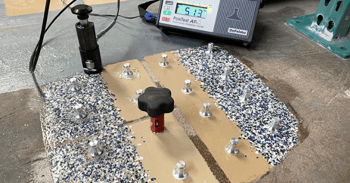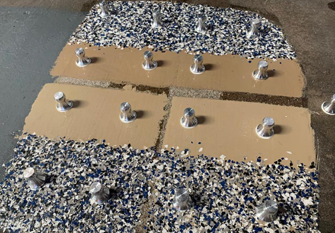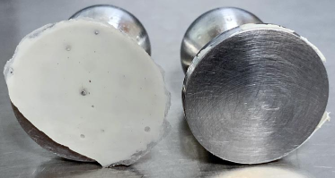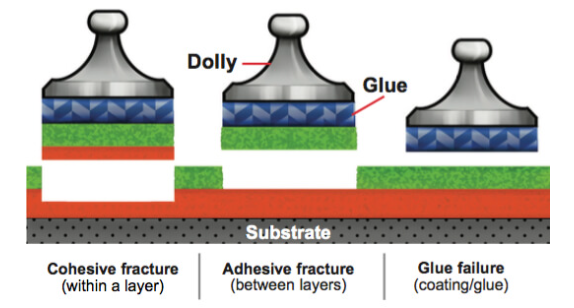The Science of Adhesion: Epoxy and Polyurea Floor Coatings
The article explores the superior adhesion properties of industrial-grade epoxy and polyurea floor coatings through ASTM D4541 pull-off tests, highlighting their ability to exceed the strength of their substrates and ensuring optimal durability and performance in garage environments.
Primo Garage Owner
5/16/20243 min read


The Science of Adhesion: Epoxy and Polyurea Floor Coatings
As the owner of Primo Garage, I have the privilege of overseeing the selection and application of materials that not only meet but exceed industry standards. Our commitment to utilizing superior products is grounded in the rigorous testing and data analysis of adhesion properties of various coatings. Here, I'll delve into the adhesion properties of different epoxies and polyureas, based on comprehensive research into industry testing by various manufacturers including data from sources from the ground breaking Slide-Lok test.
Understanding Adhesion Testing
Adhesion testing, specifically the ASTM D4541 pull-off test, is a critical metric for assessing the efficacy of concrete floor coatings. This test measures the force required to pull a coating off from its substrate, providing a quantitative look at the bond strength between the coating and the concrete. Failures in this test can occur either in the substrate itself or within the coating system, indicating either the strength of the coating or the effectiveness of its bond to the concrete.
Comparing Coating Types
1. Industrial-Grade Epoxy: These coatings typically offer exceptional adhesion properties. In tests, systems like the high solids epoxy used by Primo Garage demonstrate pull-off strengths well above 900 psi, far exceeding the tensile strength of standard concrete (400-500 psi). This indicates not only a strong bond but also that the coating enhances the strength of the concrete itself.
2. Water-Based Epoxy: Although more accessible and often used in DIY projects, these epoxies generally offer lower adhesion strengths compared to their industrial counterparts. However, recent advances have seen improvements in this area, with some waterborne epoxy systems achieving adhesion strengths comparable to more robust systems, reaching up to 881 psi in pull-off tests.
3. Polyurea: Known for its rapid curing times and durability, polyurea coatings also show impressive adhesion capabilities. With pull-off strengths often nearing 900 psi, polyurea coatings demonstrate substantial bonding effectiveness, capable of exceeding the strength of the substrate itself.
Recommendations for Optimal Adhesion
For garage floor coatings, particularly in environments subject to heavy use or extreme conditions, choosing the right primer and coating system is crucial. An industrial-grade epoxy with a moisture vapor barrier presents the best option for the base layer of a concrete coating system. Such epoxies not only provide excellent adhesion but also protect the substrate from moisture-related issues, which are often a critical challenge in garage environments in Florida.
Primo Garage's Commitment to Quality
At Primo Garage, our coating systems, which include these high-quality industrial epoxies, consistently rank highest in adhesion tests. The substrate often fails before the adhesion of our epoxy does, underscoring the reliability and durability of our installations. This performance is not just a measure of quality but a testament to our commitment to providing the best possible solutions to our clients, ensuring that their garage floors are as aesthetically pleasing as they are functional and durable.
In conclusion, the choice of material in floor coatings plays a significant role in the long-term success of the flooring. By opting for high-quality, scientifically tested options like those used at Primo Garage, customers can ensure that their investment is both sound and lasting.


In this ground breaking test, metal dollies are adhered to a variety of substrates utilizing the most common epoxy and polyurea floor coating materials where the force required to pull them off can be measured.


In the case of high solids epoxy, they consistently demonstrated pull off strengths that exceeded 900 psi and as you can see in the picture, the dollies pulled part of the concrete up with them as the substrate failed before the epoxy bond.


In the case of low cost water based epoxy and polyurea, high adhesion rates (but under 900) were also demonstrated, but the point of failure was typically at the adhesion level rather than the substrate.


A key metric in these type of tests is where the point of failure occurs more so than the strength required to cause the failure. As you can see on the right, the failure point can be at the coating or glue, it can be between layers, or within a layer.
Contacts
info@primogarage.com
Socials
Subscribe to our newsletter
(904) 944-4341
